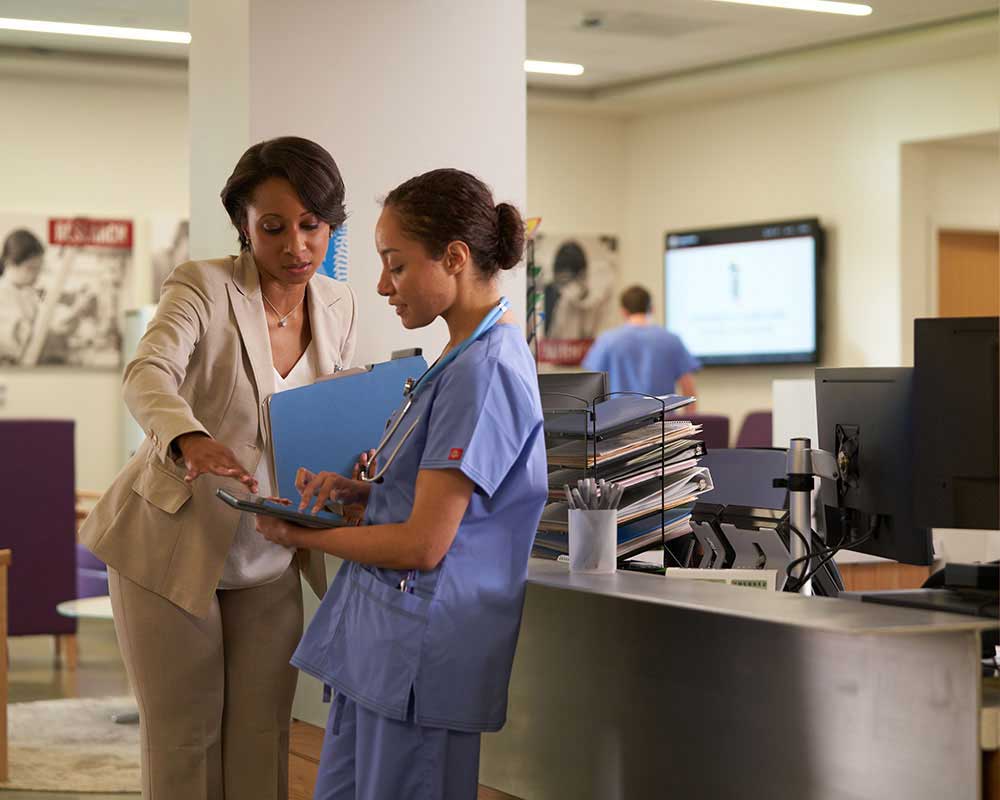Just How to Boost Performance in Medical Administration with Modern Devices
Just How to Boost Performance in Medical Administration with Modern Devices
Blog Article
Ideal Practices in Medical Management for Improving Effectiveness and Decreasing Costs
In the ever-evolving landscape of healthcare, the quest of ideal methods in clinical administration is extremely important for improving efficiency and curbing expenditures. By incorporating advanced innovations such as electronic health documents and telemedicine, healthcare suppliers can streamline operations and enhance individual treatment.
Leveraging Advanced Modern Technology
In today's quickly advancing healthcare landscape, leveraging advanced innovation is no more optional yet vital for efficient medical administration. The integration of electronic solutions into healthcare systems has changed the means centers operate, improving procedures and enhancing client treatment. Electronic Wellness Records (EHRs) are pivotal, providing detailed individual information that can be accessed promptly by accredited workers, hence lowering redundancy and decreasing mistakes. By systematizing person details, EHRs remove the demand for cumbersome documents and help with seamless communication amongst medical care providers.
Telemedicine is another technological improvement that has changed individual interaction. It supplies comfort for both clients and medical care professionals by making it possible for remote examinations, which can minimize the need for in-person visits and enhance appointment organizing. Additionally, telehealth systems can prolong medical care access to country or underserved areas, linking gaps in treatment shipment.
Moreover, using Expert system (AI) and artificial intelligence is ending up being significantly common in anticipating analytics, allowing for early discovery of potential health and wellness concerns and more informed decision-making. These technologies, when integrated successfully, can boost diagnostic accuracy and individualize patient treatment strategies, eventually leading to improved medical care outcomes and operational effectiveness.
Optimizing Source Appropriation
Effective source appropriation is essential for taking full advantage of the performance of clinical management. By strategically managing sources such as workers, tools, and funds, healthcare facilities can considerably improve their functional efficiency, enhance patient outcomes, and minimize unneeded expenses. The primary step in maximizing resource allotment includes carrying out a detailed evaluation of present possessions and determining locations where sources might be underutilized or exhausted. This evaluation ought to be data-driven, using metrics and analytics to inform decision-making processes.
Prioritizing resource allowance based on person demands and solution demands is essential. Carrying out flexible staffing versions can also optimize labor resources by readjusting employees allowance in response to fluctuating client quantities.
Funds ought to be meticulously monitored and alloted with critical foresight to sustain both temporary operational demands and lasting institutional goals. This includes investing in training programs that enhance staff competencies and taking on energy-efficient methods that reduce functional expenses (medical administration). Inevitably, an optimized resource allowance strategy fosters a sustainable health care setting that is receptive, efficient, and monetarily prudent
Streamlining Workflow Procedures
When health care facilities goal to boost functional performance, streamlining operations procedures comes to be a critical focus. Efficient process minimize redundancy, get rid of unnecessary steps, and enhance control amongst medical care specialists. This technique not just accelerates solution shipment however also boosts the top quality of patient treatment.

Following, technology combination plays a substantial role in simplifying workflows. Executing digital health and wellness documents (EHRs) and electronic medical home professional order access (CPOE) systems decreases paperwork, decreases human error, and makes sure info comes to all pertinent employees. Furthermore, leveraging telemedicine platforms can enhance person examinations and follow-ups, minimizing the pressure on physical infrastructure.

Eventually, streamlined operations bring about cost reductions and boosted person fulfillment, cultivating an extra lasting medical care environment.
Enhancing Information Monitoring
Structure upon streamlined operations, maximizing information administration becomes a vital part ahead of time healthcare management. Reliable information management systems are critical for preserving exact patient documents, boosting decision-making, and guaranteeing compliance with regulatory requirements. By implementing robust data monitoring services, health care facilities can improve the quality of individual care while concurrently lowering operational prices.
One secret aspect of enhancing information monitoring is the assimilation of innovative digital health and wellness document (EHR) systems. These systems promote the seamless exchange of patient information across various departments, decreasing replication of tests and lessening errors. A well-designed EHR system sustains information analytics, enabling More about the author health care companies to identify patterns and make notified decisions regarding patient treatment.
Furthermore, protecting individual data is critical. Embracing thorough cybersecurity measures, including encryption and regular audits, makes certain the honesty and discretion of sensitive info. This not just secures people but additionally preserves the institution's reputation.
Spending in personnel training is one more critical element. Enlightening medical care experts on data administration methods boosts their capacity to properly make use of innovation, resulting in enhanced individual end results. Finally, improving data management with sophisticated technology and extensive training is important for achieving efficiency and cost reduction in medical management.
Fostering Collaborative Interaction
An essential component ahead of time clinical management is fostering collaborative interaction amongst health care specialists. Efficient communication is critical for ensuring smooth individual treatment, enhancing therapy results, and lessening mistakes. By motivating open discussion and sychronisation across multidisciplinary groups, health care organizations can enhance their functional performance and lower unneeded expenses.
Central to this strategy is the integration of communication innovations such as electronic health records (EHRs) and safe and secure messaging systems, which facilitate the fast exchange of vital client information. These tools allow health care carriers to access and share information in actual time, guaranteeing that all group participants are notified and aligned in their decision-making processes. In addition, normal team conferences and interdisciplinary rounds can further advertise a society of collaboration and accountability.
Training programs focused on boosting communication abilities are also necessary. Ultimately, cultivating collective interaction leads to boosted healthcare delivery and cost savings.

Final Thought
Incorporating innovative modern technology, such as digital health records and telemedicine, along with enhanced source allotment and streamlined operations processes, is essential for enhancing performance in clinical management. Effective information administration and fostering joint communication among medical care teams are important for decreasing redundancies and boosting care quality. By focusing on preventative treatment and right here participating in quality renovation efforts, healthcare companies can accomplish considerable cost savings and improved individual end results, therefore making certain lasting health care shipment in a progressively complicated environment.
Report this page